Truman Capote's Life in Pictures
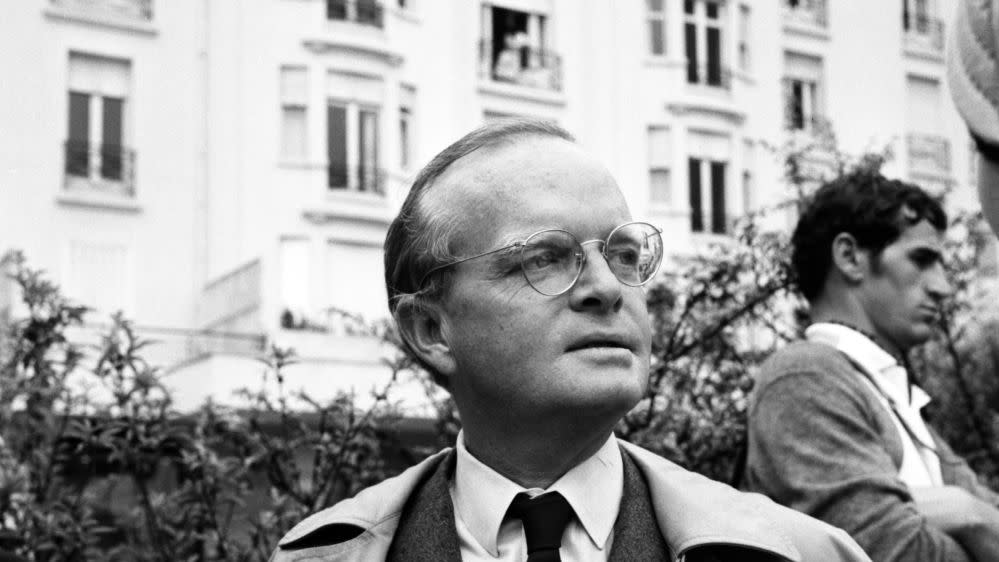
- Oops!Something went wrong.Please try again later.
"Hearst Magazines and Yahoo may earn commission or revenue on some items through these links."
Truman Capote was born Truman Streckfus Persons in 1924 in New Orleans. He had a peripatetic childhood, spending time in Alabama, New York, and Connecticut—sometimes with his mother, Lillie Mae Faulk, but often without. As a young man, he began working at the New Yorker, which was his entrée into literary life, and would go on to become a world-famous author, bon vivant, and semi-professional friend to the rich and famous.
One of the most compelling chapters of his life is being dramatized on the new television series Feud: Capote vs. the Swans, which will follow his legendary falling out with a group of high-society women who had taken him into their fold. But there was more to Capote's existence than just the Swans and that infamous infighting. Here, we look back at his life in photos.
1948
After some success writing short stories, Capote published his first book, Other Voices, Other Rooms, in 1948. The novel, which was a semi-autobiographical story about a young man growing up in the South, was a hit and spent nine weeks on the New York Times bestseller list.
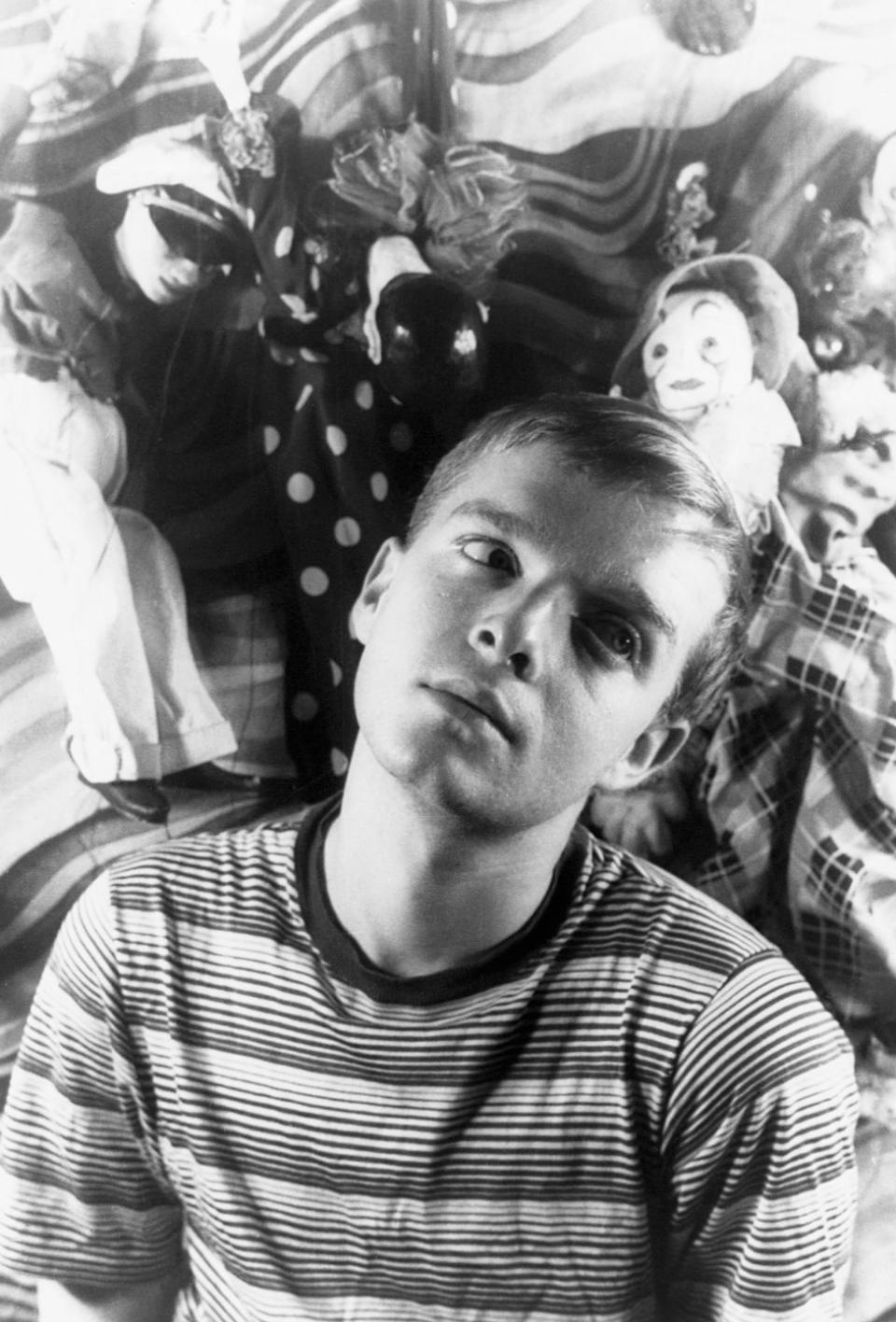
1953
Capote, pictured here during a trip to Portofino, Italy, branched out in the 1950s to writing for the stage and screen. In 1953, Beat the Devil, a film he co-wrote with John Huston, was released, and he also used his travels to turn his attention to projects including In Cold Blood. “New York was a kind of addiction," Capote biographer Gerald Clarke he said. "He realized that if he wanted to write—and that’s all he wanted to do—he would have to do it elsewhere.”
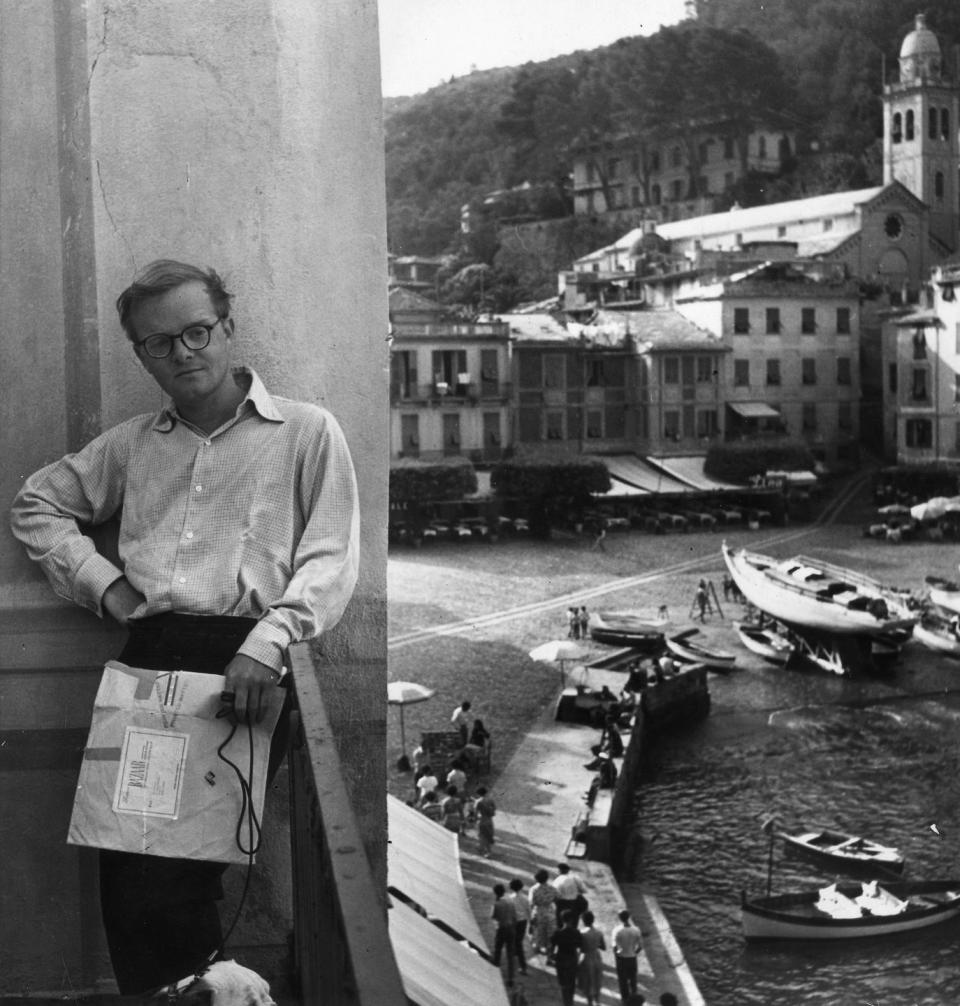
1955
By the mid-1950s, Capote, seen here dancing with Marilyn Monroe at the fashionable El Morocco nightclub in New York City, had released novels, short stories, plays, and films. The year prior to this photo, his first Broadway musical, House of Flowers, had opened; when it came to literature and culture, he was practically inescapable. He also had a knack for befriending the famous and powerful—his cadre of socialite friends would infamously become known as his "Swans"—and became also as well known for his Rolodex as his writing. The New York Times once quipped that Capote was “particularly attractive to the gilded people.”
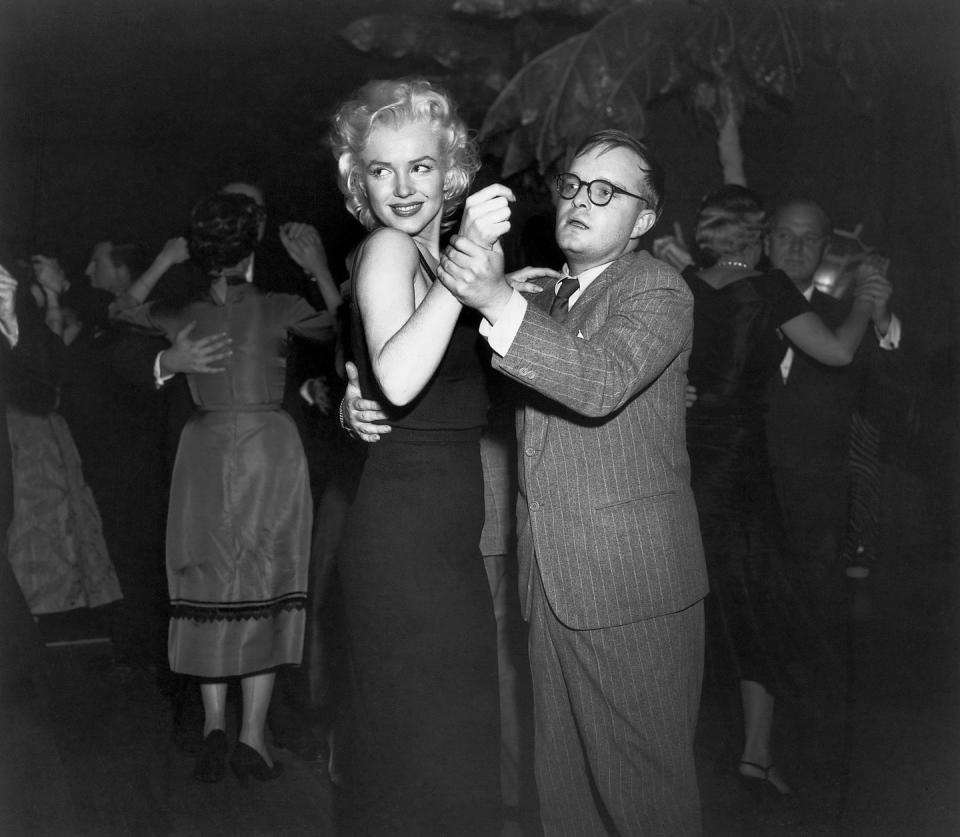
C. 1957
Capote, seen here with his friends Babe Paley (right), and Contessa Madina Arrivabene. The two were among his "Swans," and would help usher him into a world of power and privilege. Many of these relationships were strained or ruined entirely in 1975 when he published the thinly veiled short story "La Côte Basque, 1965" in Esquire, exposing his friends' secrets and betraying their decades of trust.
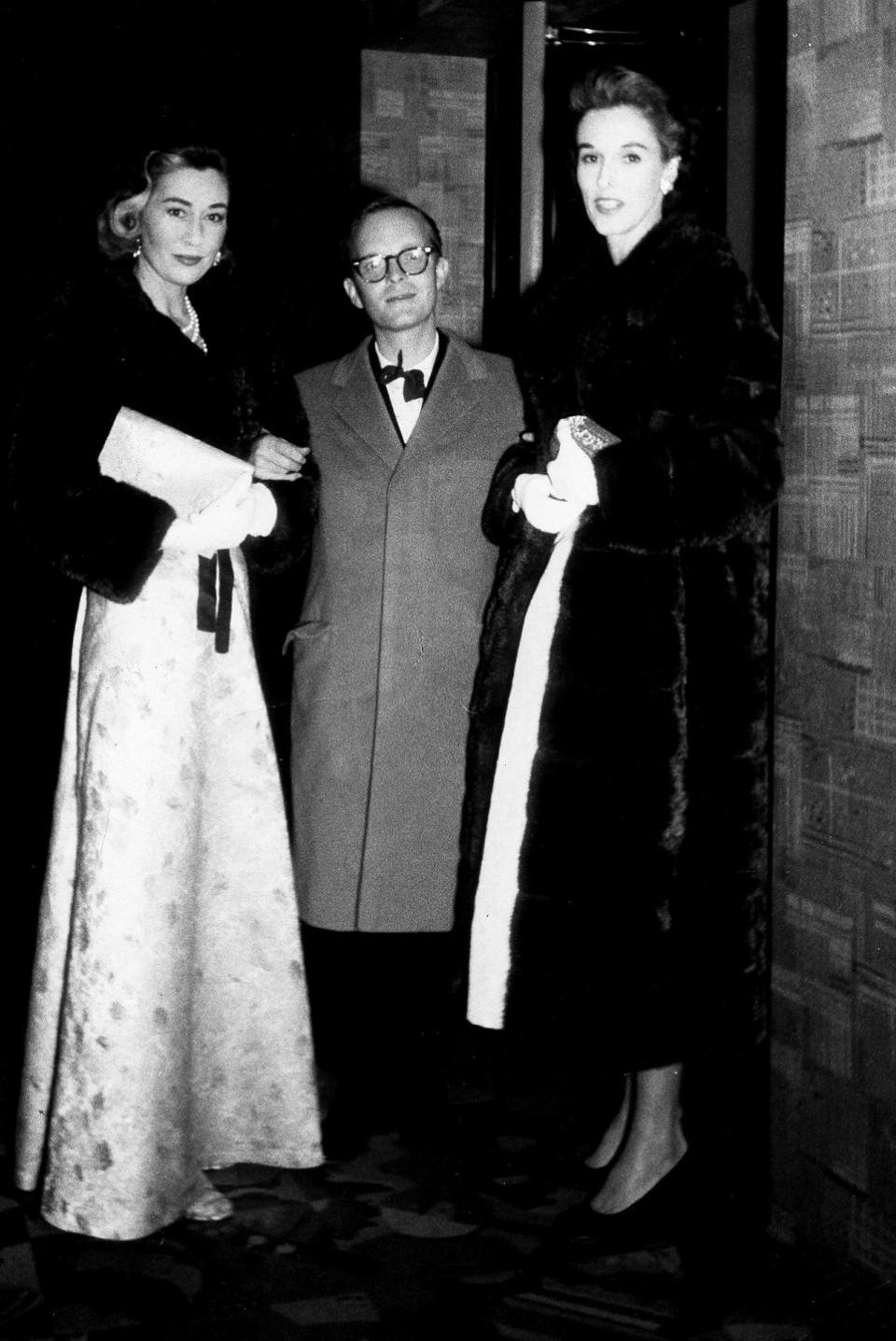
1958
In 1958, Capote published the novella Breakfast at Tiffany's—first in Esquire and then as part of a collection—which would go on to become one of his best-known works. Part of the allure of the story? Trying to figure out Capote's inspiration for his infamous Holly Golightly. Many people say it was Marguerite Littman, though his biographer once noted, "half the women he knew and a few he did not claimed to be the model for his wacky heroine."
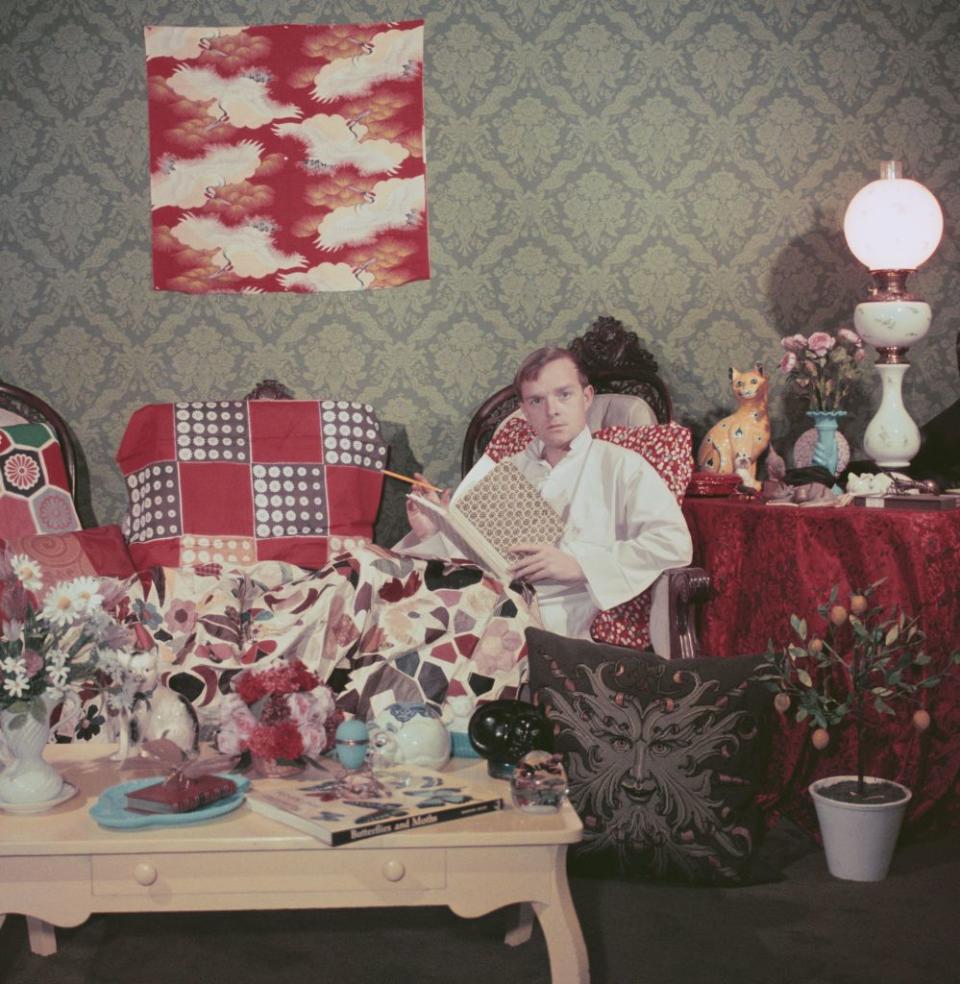
1961
Three years after Breakfast was published, the story was adapted for the big screen. The film, written by George Axelrod and directed by Blake Edwards, earned five Academy Award nominations and star Audrey Hepburn's turn as Holly Golightly has inspired generations of stylish young Manhattanites (and countless Halloween costumes). While the film has played a large part in cementing Capote's legacy, he reportedly didn't care for it and was no fan of Hepburn's performance.
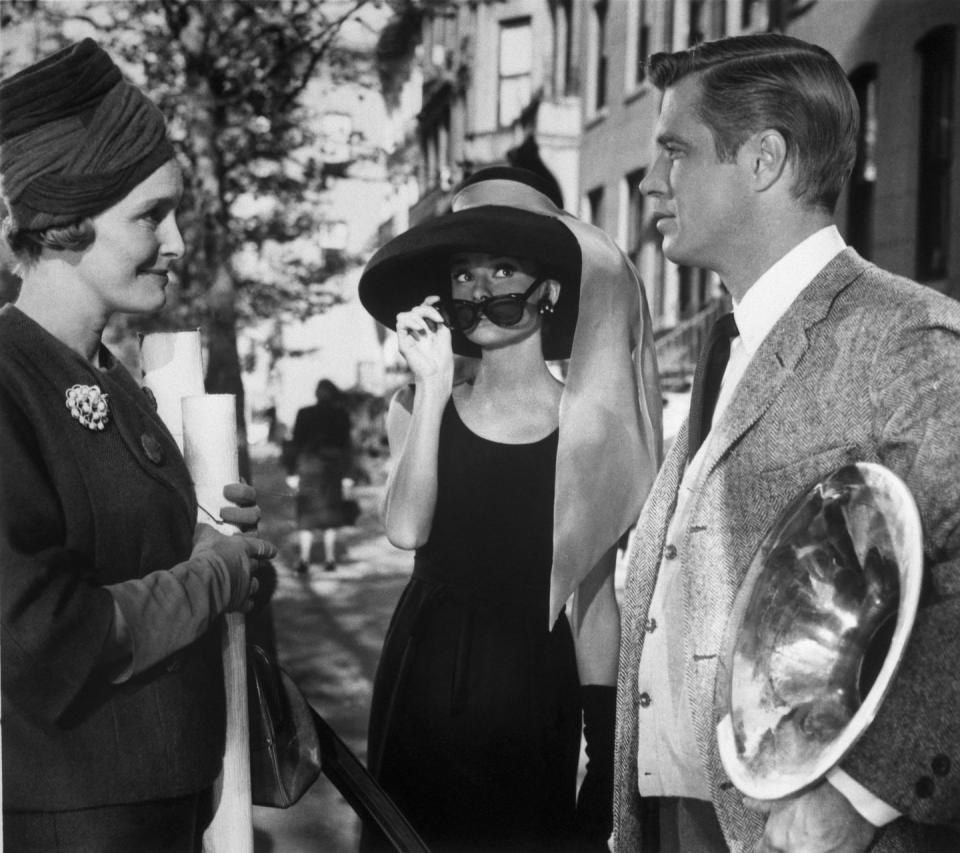
1966
Perhaps Capote's greatest literary feat was publishing In Cold Blood in 1966. The book, which tells the true story of a gruesome mass murder in Kansas, was first serialized in The New Yorker and then released as a whole—creating a stir thanks to its use of traditional novelist techniques to tell a non-fictional story and going on to sell millions of copies.
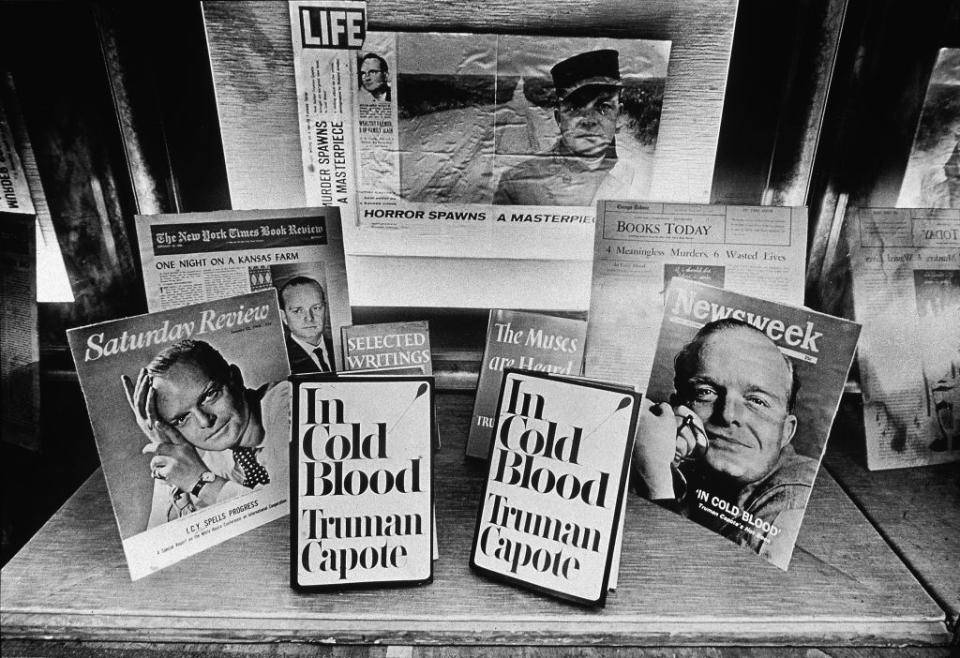
1966
In November 1966, at the height of his powers, Capote hosted his infamous Black and White Ball at the Plaza Hotel in New York City. Held in honor of Katharine Graham, the publisher of The Washington Post, the party made waves thanks to its over-the-top nature and a star-studded guest list that included Mia Farrow and Frank Sinatra, Diana Vreeland, Wallis Simpson, Marella Agnelli, Norman Mailer, and Andy Warhol. (Want more? Deborah Davis's book The Party of the Century chronicles the affair in deep, delicious detail.)
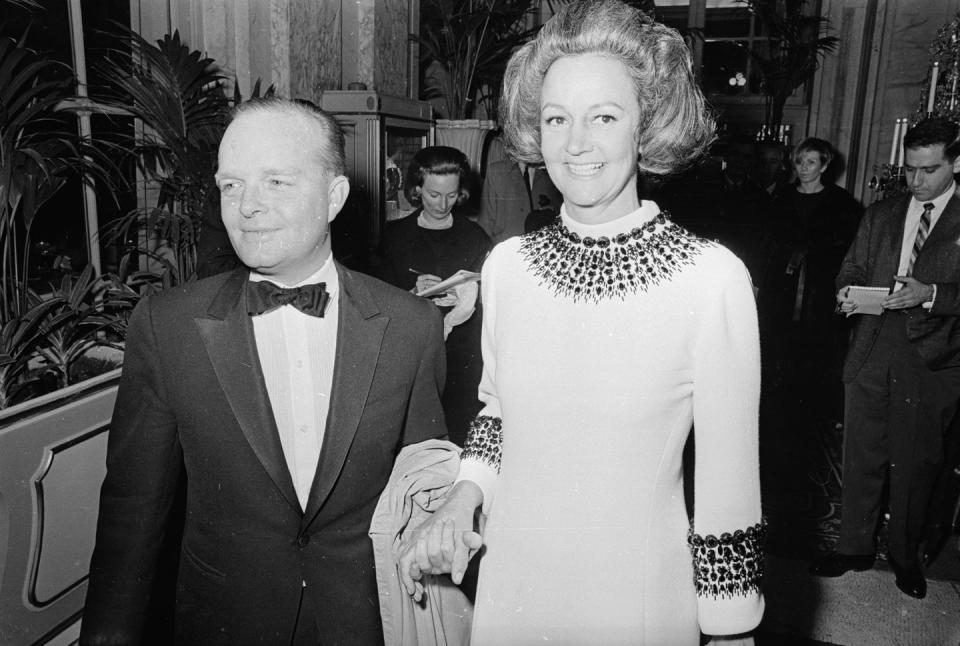
1967
Capote's rival Gore Vidal famously quipped, "There are two things you never turn down: sex and appearing on television.” Capote certainly agreed with at least half of the sentiment; here, he sits for an interview with Barbara Walters in 1967—the year that In Cold Blood was made into a movie, and also that he won an Emmy Award for the TV movie A Christmas Memory. For the rest of his life, he'd be a regular guest on TV talk shows.
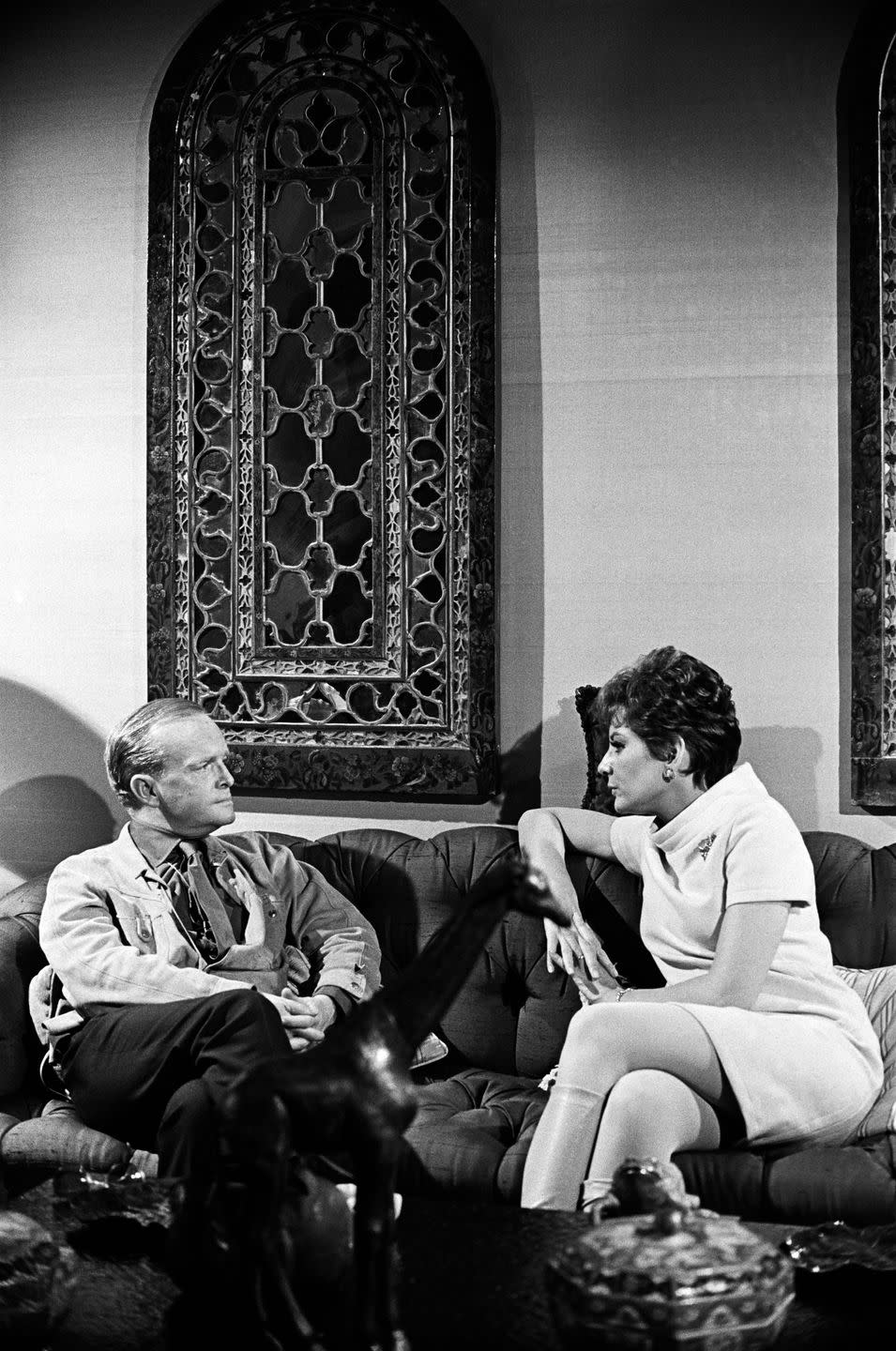
1968
Here, Capote is pictured in Cannes in 1968, when his film Trilogy, an adaptation of A Christmas Memory was set to screen in the annual film festival—until it was cancelled due to civil unrest in France.
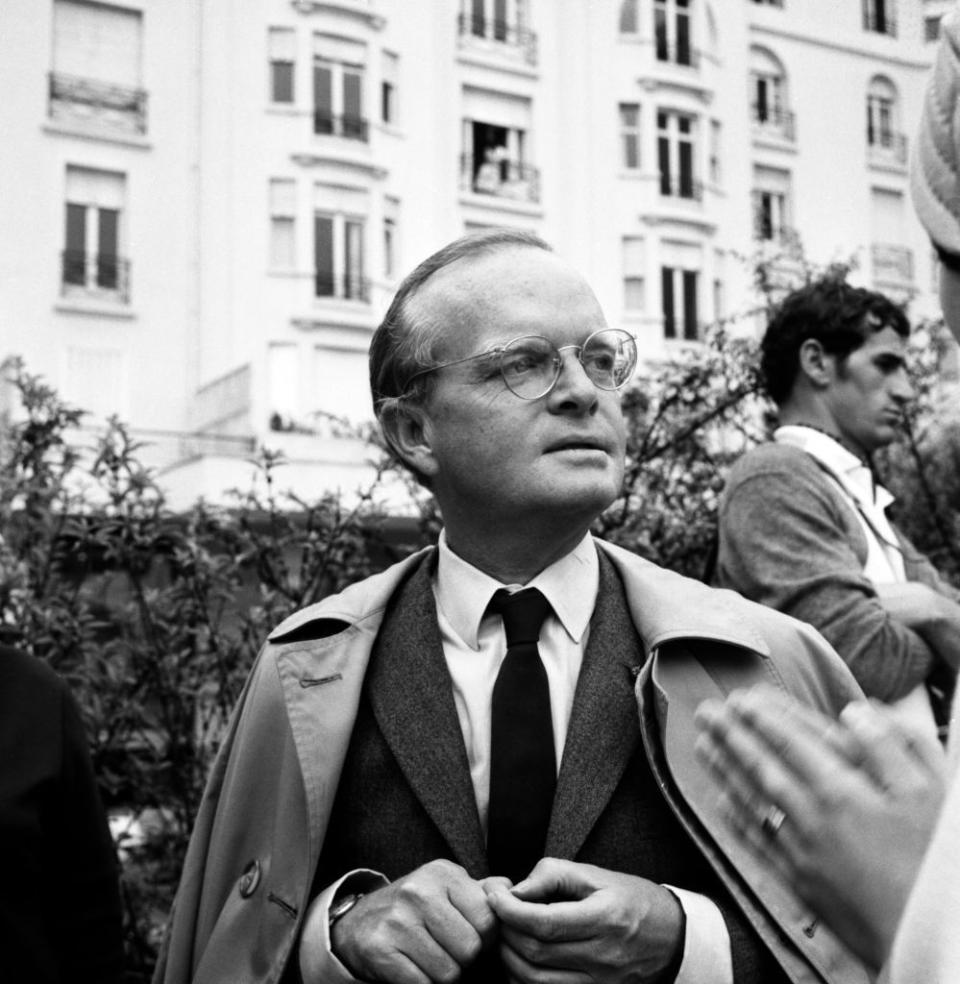
1968
Here, Capote is seen with Lee Radziwill—an American-born princess, one of his Swans, and the sister of Jackie Kennedy. The two had a famously close relationship; he wrote the screenplay for her much-maligned film Laura and they maintained an intimate friendship... that is until he published “La Côte Basque, 1965” in a 1975 issue of Esquire and most of his friends, Radziwill included, turned on him.
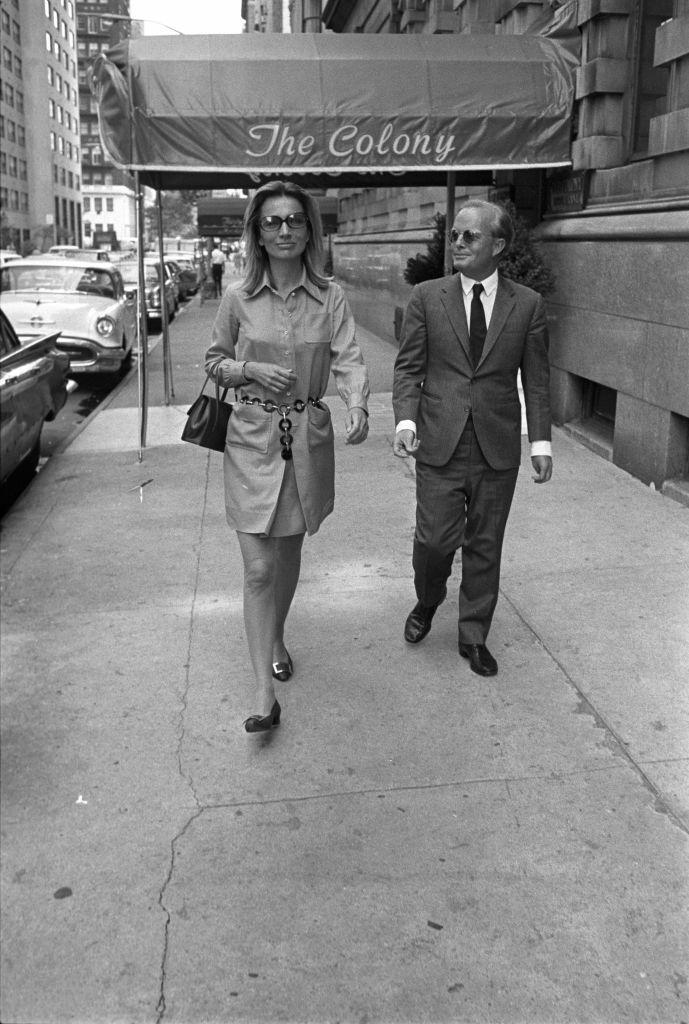
1970
Capote might be most closely associated with the American South and New York City, but he also spend a good amount of time in California. After the release of In Cold Blood, he purchased a home in Palm Springs (he's seen here with his housekeeper, Myrtle Bennett), a favored getaway of movie stars and the L.A. industry crowd.
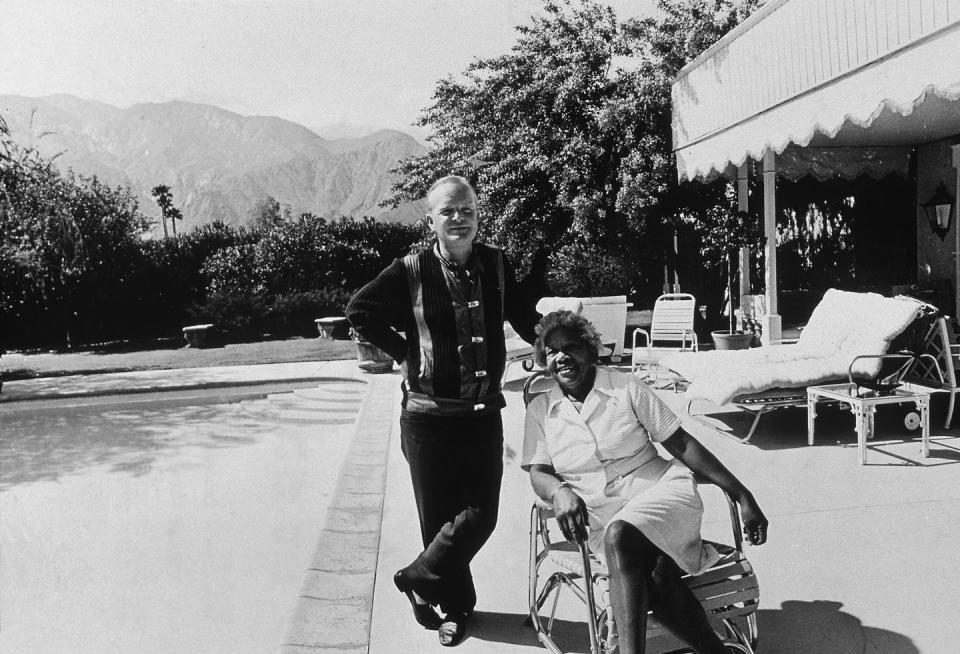
1971
Here, Capote's pictured with a cat and a dog near his home in Sagaponack, Long Island, which he reportedly once said was like "Kansas with a sea breeze." Capote and his longtime partner Jack Dunphy are said to have had separate houses on the same plot of land, and (some but not all of) their ashes were scattered into a pond on the site after their deaths.
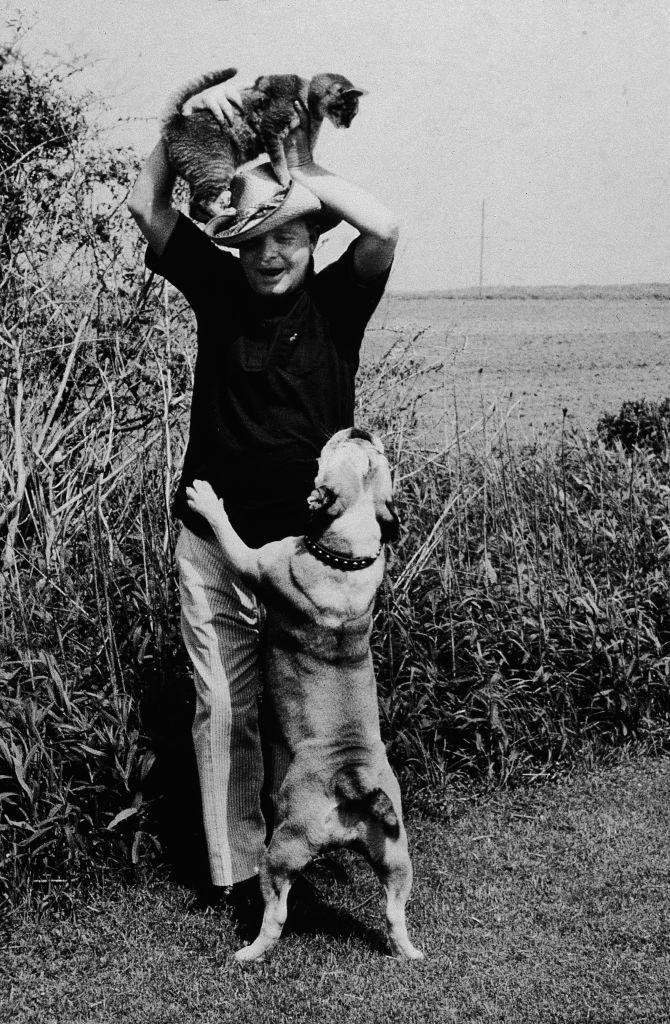
1973
Here, Capote is pictured at San Quentin prison where, in 1973, he would interview inmate Bobby Beausoleil, a Manson Family member and convicted killer. Capote, no stranger to prison interviews, would later write about the meeting, and Beausoleil would take issue with the depiction of their conversation.
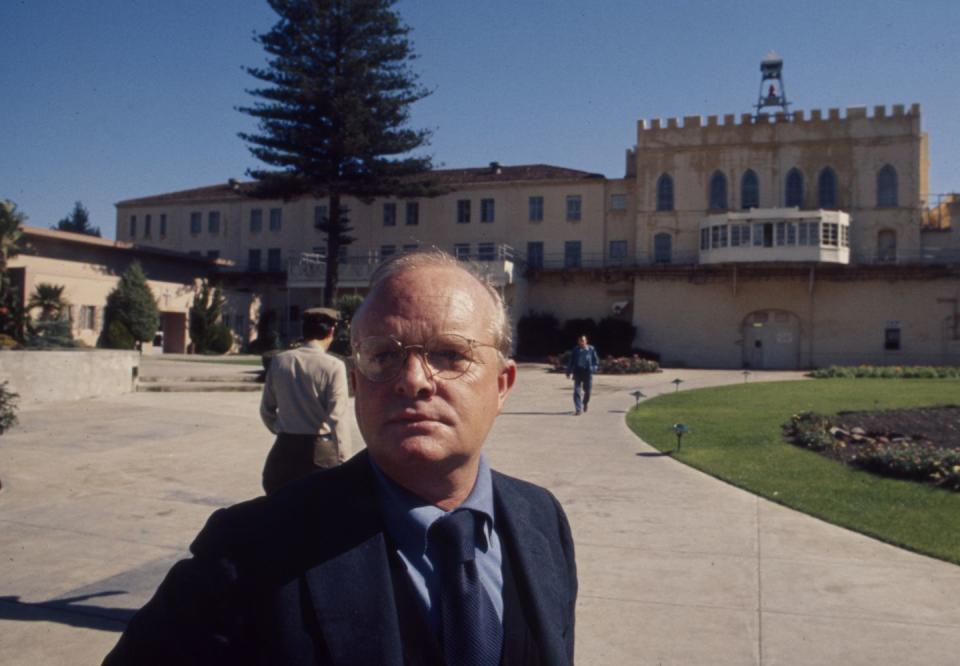
1973
By the 1970s, Capote had become famous beyond his literary and society circles. In 1973, he even made a guest appearance in a skit on the series The Sonny and Cher Comedy Hour.
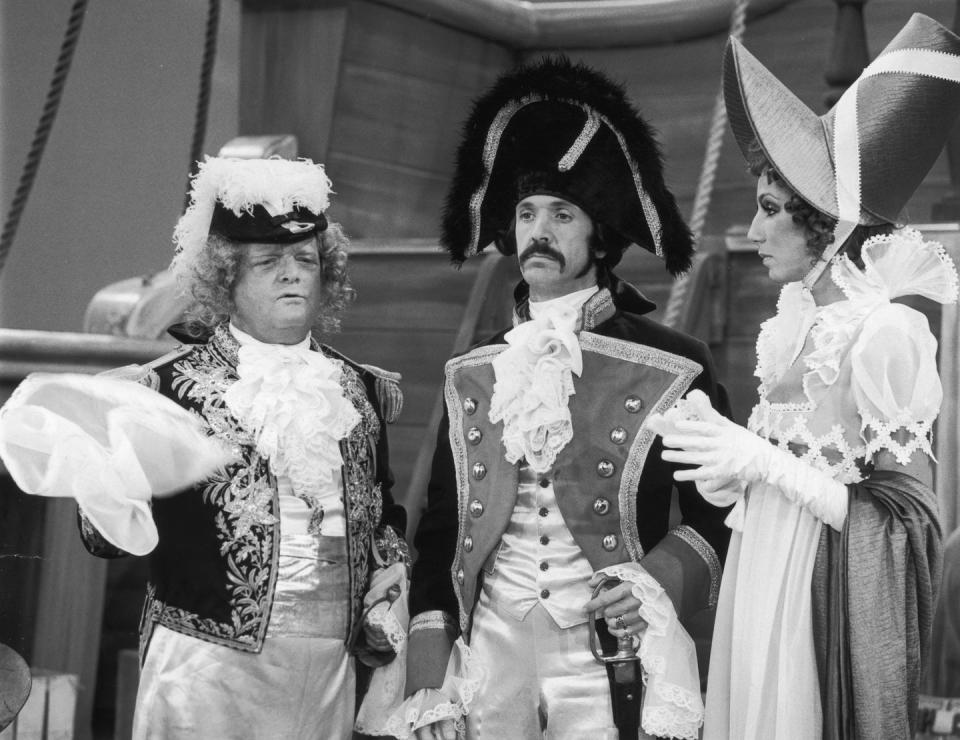
1976
Capote had written movies, sure, but by 1976 he was working on the other side of the business, with a starring role in the Neil Simon-penned whodunnit spoof Murder by Death alongside Maggie Smith, Peter Falk, David Niven, and Eileen Brennan. He even earned a Golden Globe nomination for his efforts.
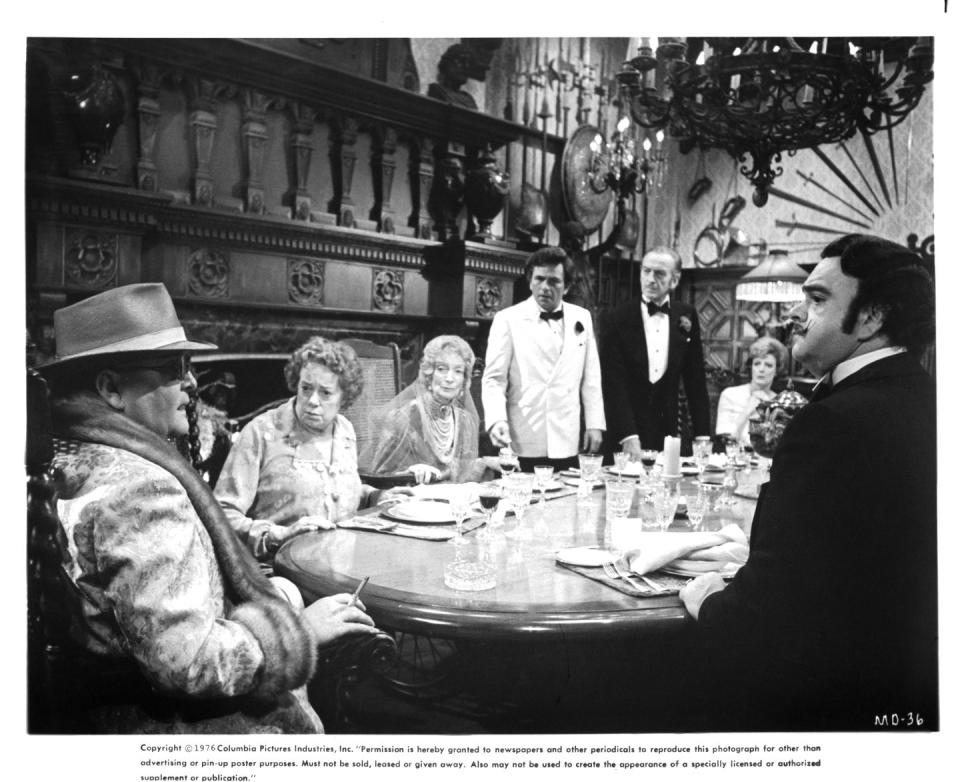
1977
After Capote was expelled from New York City's finest dining rooms, he made himself at home among cafe society. Specifically, he was a regular at Studio 54, the midtown Manhattan nightclub that came to define an era and seemed like a natural fit for Capote, who appreciated its mix of high society, celebrity, and grit. Here, the author is pictured with the club's co-owner Steve Rubell.
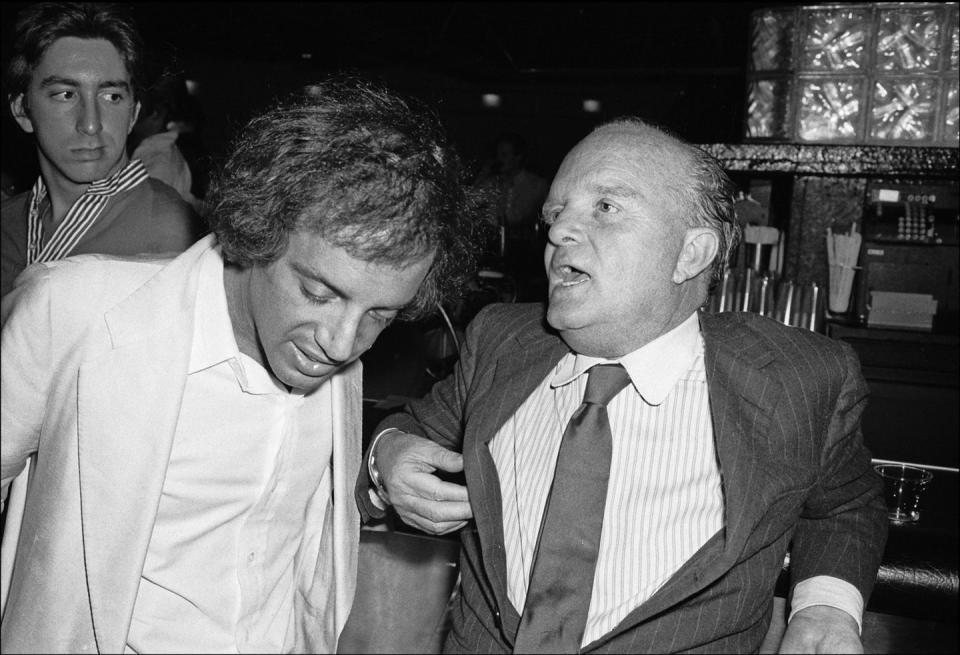
1978
Despite his excommunication from New York society, Capote did stay close with C.Z. Guest. Here, the two are pictured at the 1978 reopening of Studio 54.
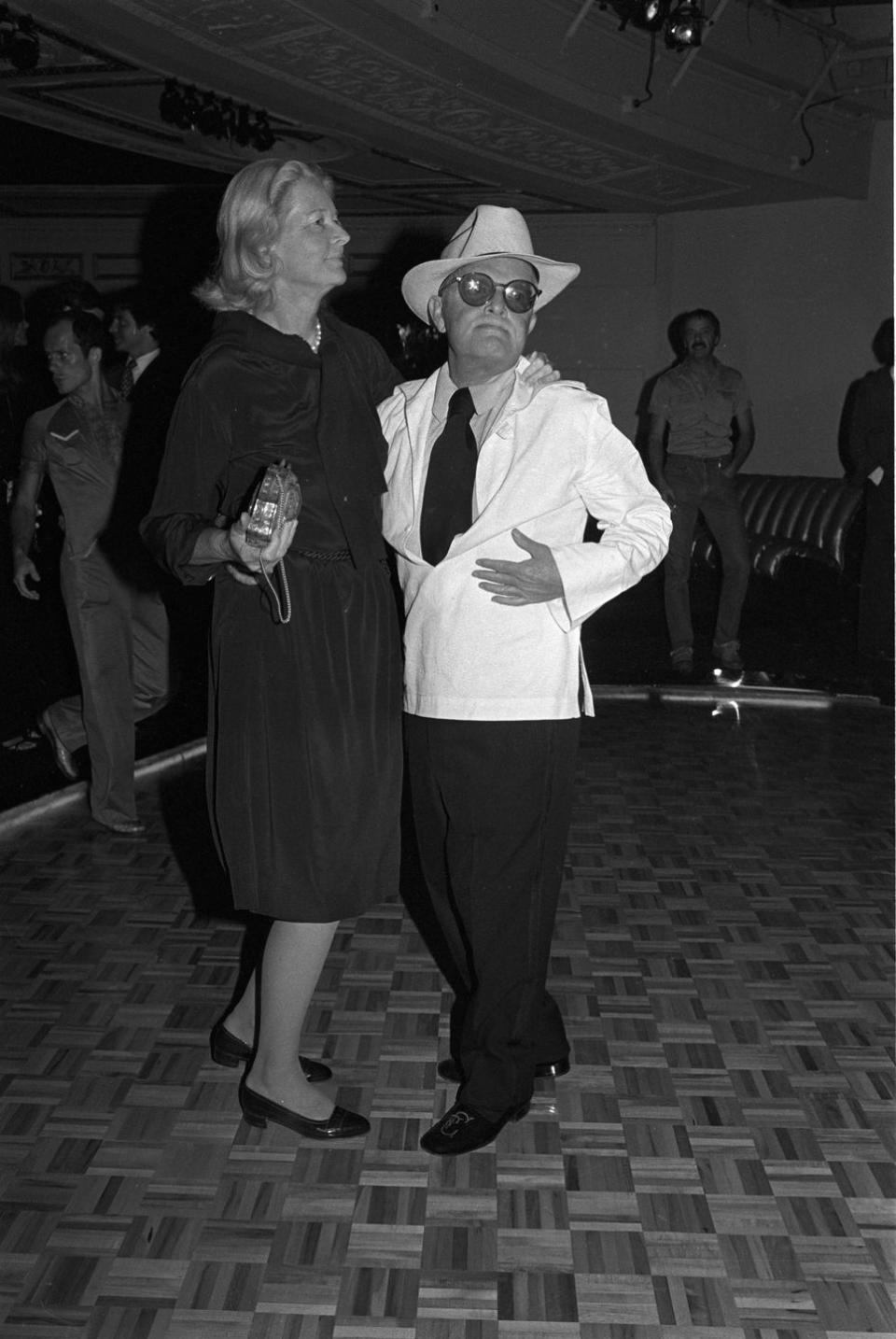
1979
Capote and Andy Warhol at a celebration marking the 10th anniversary of the artist's Interview magazine. The two were friends—a relationship that inspired the play Warhol/Capote—and colleagues (Capote would contribute to Interview), something about which Warhol, whose first solo exhibition was titled "Fifteen Drawings Based on the Writings of Truman Capote," must have been thrilled.
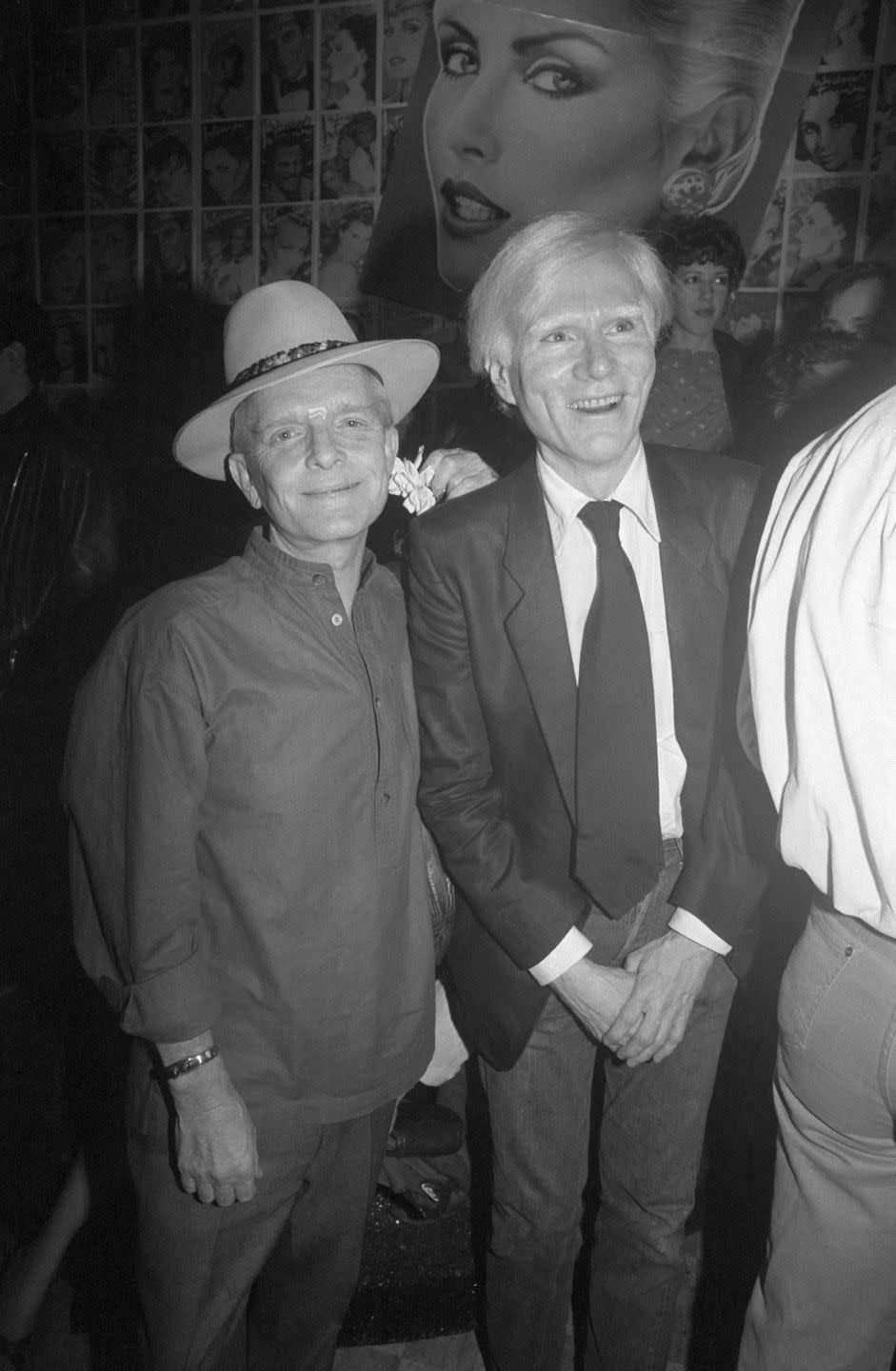
1985
Capote died in 1984 at the Bel Air home of his friend Joanne Carson, seen here wearing his hat. A year later, Carson—who kept some of Capote's ashes, which were stolen multiple times and eventually sold—auctioned off some of his belongings.
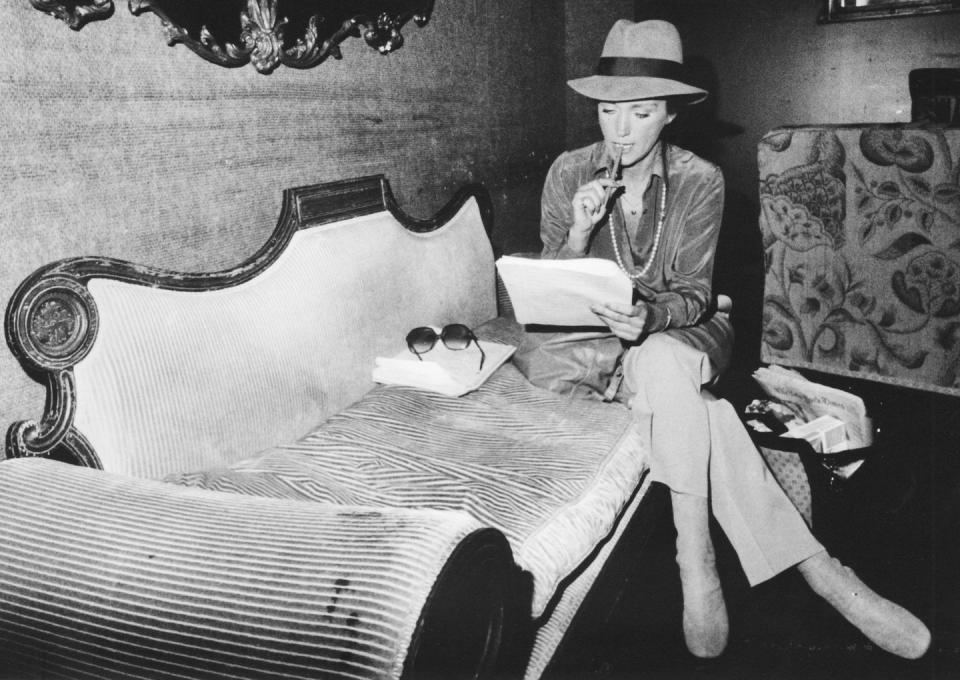
You Might Also Like

